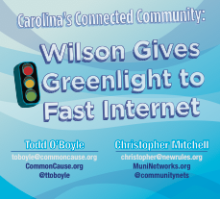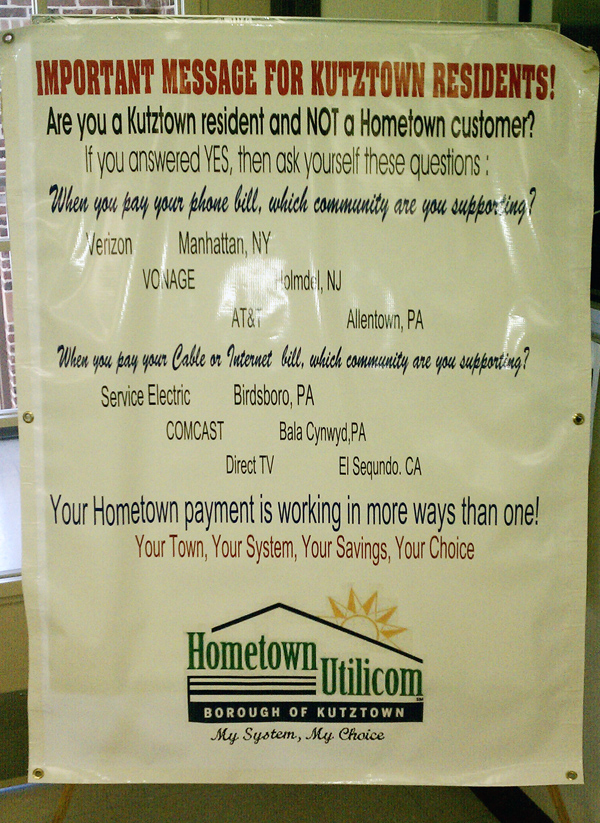
Fast, affordable Internet access for all.

In the 1990s, the community of Shafter, California, began developing its strategic plan; the move would eventually lead them to build a municipal broadband network. The town of 17,000 still depended primarily on agriculture but manufacturers were relocating to the community, drawn by its proximity to the railroad and its open space. Potential employers increasingly focused on broadband access as a priority and Shafter realized broadband would be critical to continued growth.
Shafter’s Assistant City Manager Scott Hurlbert recently explained to us how the community built its own fiber network to serve commercial clients, local government, and schools. This incremental approach is not unique but Shafter has no municipal electric nor gas utility, which does puts it in the company of Santa Monica, Mount Vernon, and a few other communities that have built networks without having a municipal power company.
Shafter’s City Council examined its strengths and its weaknesses and found a way to build a network with no borrowing or bonding. The community continues to expand its fiber network, attracting businesses and improving quality of life in this central California town.
In the 1990s AT&T was the main business services provider and it would only improve business telecommunications on an order-by-order basis. Companies that wanted to build beyond the developed town had to pay for the installation themselves, often waiting months to get connected. Prices were "obscene" and the delays almost killed several commercial deals. Even today AT&T takes the same approach in Shafter.
When he joined the City in 2005 as the IT Director, Hurlbert and his staff researched wireless technologies but determined that fiber-optic deployment would be the best option. At that time, the bandwidth demand was already intense and a wireless network would need fiber for backhaul. Hurlbert and staff also investigated other communities, including Chelan, Washington, to look for workable models.

As we monitored Georgia's HB 282, a bill to limit the capacity of local governments to invest in Internet networks that spur economic development, we learned of many existing networks that have helped communities to thrive.
Brian Thompson, Director of Electric and Telecommunications in Monroe took some time to tell us a little about their city network. Located in the north central section of Georgia, with a population of 13,000, the network now offers triple play services to residents and businesses. Its network started in the 1970s with a municipal cable tv network. Today, the network is a hybrid with fiber having been added as an expansion to its cable network.
Monroe's investment in its fiber began as a way to improve connections for education. The Walton County School District could not find a private provider willing to collaborate on an affordable network between school facilities. The city took on the challenge and built a point-to-point network which the School District paid for in 10 years. In the mean time, the city expanded its network in other areas. Now, the Walton County Schools have gig service between facilities and to the Internet. The District pays only $500 per month for a service that would cost five times more from a private provider.
Thompson also confirmed what we hear from other communities with publicly owned networks - prices for business and residential services are very competitive and service is superior. He notes that customers often express appreciation for local representatives, rather than dealing with a huge bureaucracy like those at Verizon or AT&T. New connections can be created in a matter of hours or days instead of weeks.

I am going to be on Gigabit Nation today with Craig Settles, a live call-in show, from 2-3 Eastern time. You can listen online here both during the show and after, when the recording will be made available.
Craig put together this summary:

The Chattanooga Gig continues to benefit the community. We have covered some of the jobs that it has created, how it has lowered City expenditures and improved street lighting, and the recently announced speed increase without hiking rates. Now, EPB can also boast about how the network has significantly cut power costs.
Dave Flessner from the TimesFreePress.com reports that, thanks to fiber enabled smart grid technology, Chattanooga's electricity rates are 5 percent less than they would be without the network. From the article:
“The savings from the smart grid and the payments from the telecom division to our electric system are exceeding our costs and that is helping save money for every customer of EPB, whether you are signed up for any of our telecom services or not,” [EPB President Harold] DePriest told EPB directors Friday. “If we hadn’t made this investment, your electric bills would be higher.”
In addition to savings for every electric consumer, the network has been wildly successful for its video, phone, and Internet offerings. There are 40,000 users to EPB and its telecom division generates more profit than its 73-year old electricity utility. Chattanooga is ahead of the game:
EPB Chairman Joe Ferguson said the [American Reinvestment and Recvery Act] stimulus funds helped speed the installation of the smart grid network from the original plan of 10 years down to less than two years.
“We’re exceeding the goals we set in our business plan,” Ferguson said. “We’ve stayed ahead of schedule; we’ve stayed on budget, and the number of customers who have signed up is better than we expected. The acceptance has been huge and that’s where the revenue comes from that we can plow back into our business and help keep our electric rates down.”
When I visited Hometown Utilicom in Kutztown, Pennsylvania, I snapped this photo of a sign they have posted in their office to remind people how supporting the local network helps the local economy. Not a very good photo, I'm afraid, but it conveys the message.

In the place where “Texas history lives,” the City of Granbury followed a fellow Texas city in delivering a Tropos wifi system that covers all 10 square miles of the city. Less than a decade ago, Granbury had no functional IT department and after hurdles with a private public partnership, established a functional and successful publicly-owned wireless network. Initially created to support city functions and mobile police, the network is available to the public, elevating the rural town outside of Fort Worth to the mobile age.
When Granbury hired IT Director Tony Tull in 2003, the technology capabilities of the city were dire: no staff, a budget of $6,000, and only two buildings with access. Tull quickly brought city and council officials on-board to his ambitious technology plan to deploy wireless WAN to all city buildings in partnership with their existing ISP, Texas-based Frontier Broadband (now acquired by KeyOn). The initial needs were to equip city personnel with mobile access which focused on police officers, firefighters, and city inspectors.
Other goals included general public and tourist broadband access, reading utility meters, perform live web casts, and connect to nearby governmental networks. After the City received a Homeland Security grant, $70,000 was earmarked to outfit over 10 police vehicles with wireless laptops. In 2004 Tull attended the Public Technology Institute’s National Summit for Local Governments in Corpus Christi where he reviewed the city’s 147 square mile wireless network by Tropos. Convinced the technology was right, Granbury deployed a test run of 40 routers across half the city and eventually 100 more to cover the roughly 10 square miles.
LUS estimates that the citizens of the community have saved 5.7 million dollars—in part direct saving from LUS' cheaper phone, video, and internet services and in part as a consequence of Cox lowering its prices and giving out special rates. Those special rates were discussed in the meeting with Huval pointing out that Cox had petitioned for and received permission to treat Lafayette as a "competitive" area. That meant that Cox could offer special deals to Lafayette users and, as we all know, has offered cuts to anyone who tries to leave. Those "deals." as Huval pointed out to Patin don't include the rural areas of the parish where Cox has no competition.But it doesn't end there. LUS Fiber, due to anti-competitive laws pushed through the state's legislature to handicap public providers, is actually subsidizing the City -- providing more benefits to everyone, even those who do not subscribe to the network.
Again it all goes back to the (un)Fair Competion Act. One of the things in that act a concession that LUS Fiber would be able to borrow from LUS' other utilities just like any other corporation could set up internal borrowing arrangements. This is not a subsidy, it's a loan—with real interest. One of the efforts to raise an issue by Messrs Patin and Theriot centered around "imputed" taxes. Those are extra costs that Cox and ATT got the state to require that LUS include in order to force LUS to raise their price to customers (you!) above the actual cost. (Yes, really. See this.